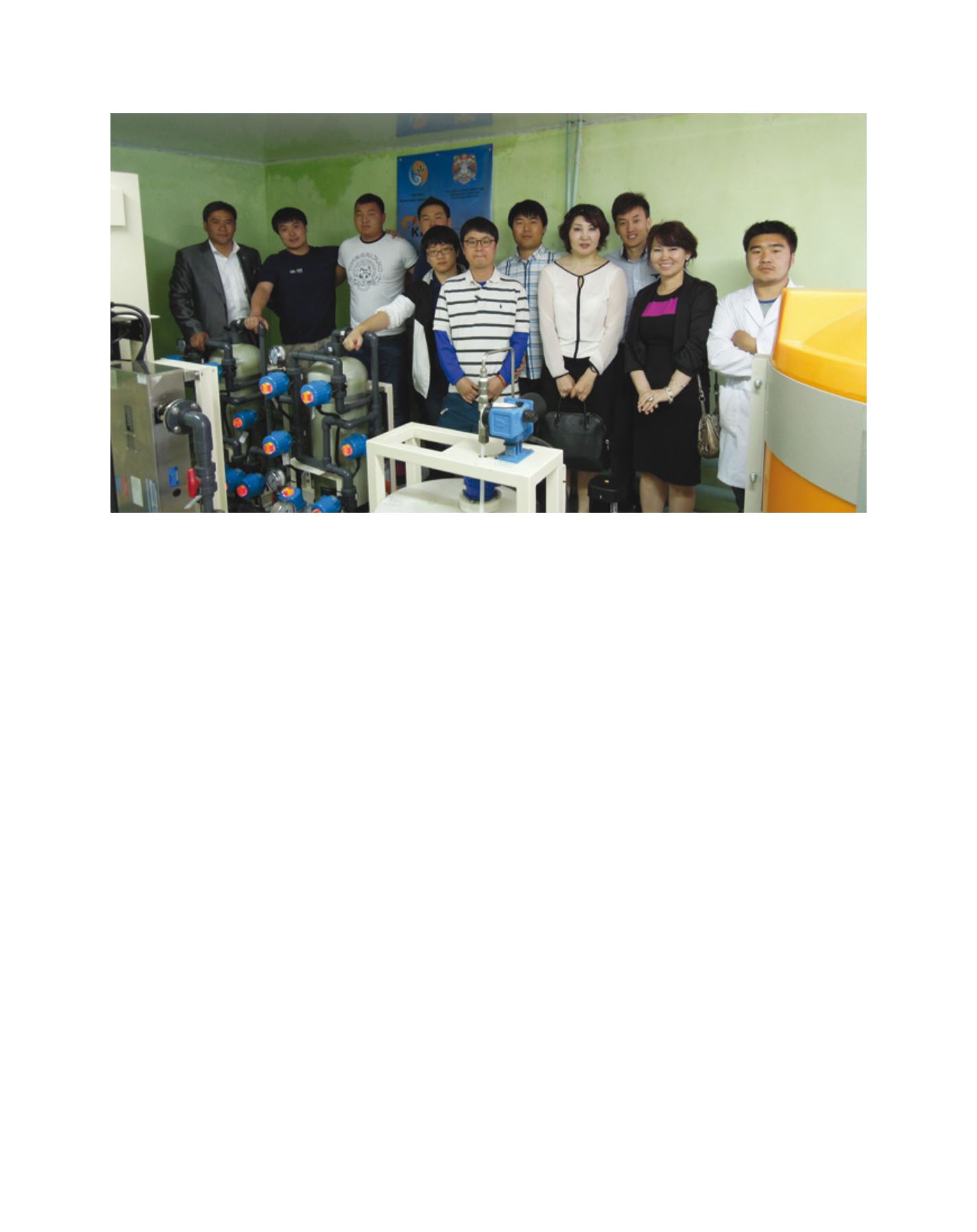

[
] 313
I
nternational
C
ooperation
on
W
ater
S
ciences
and
R
esearch
Hyundai Engineering develops a remote monitoring and decision-
making system based on IT technology for the operation and
management of water treatment processes in Sri Lanka. KICT devel-
ops small-scale, movable, decentralized water treatment package
systems for developing countries and natural disaster preparation.
The packaged water treatment system is being tested in Mongolia to
optimize its operation conditions.
Through strategic projects, the centre expects to develop a func-
tional and intelligent integrated waterworks system and to increase
the applicability of environmentally-friendly technology based on
IT-ET technologies. It is also expected that energy saving technolo-
gies leading to low carbon economy will be developed.
The Yeongdeungpo membrane system in Seoul, Korea
The Yeongdeungpo membrane system is a water treatment system
based on membrane filtration processes replacing sand filtration
to produce good quality drinking water. It was completed in 2010
through the joint efforts of the Ministry of Environment Korea,
Seoul Metropolitan Government and private enterprises (Daewoo
E&C and Hanwha E&C).
Daewoo Integrated Membrane System (DIMS) technology
produces safe and reliable drinking water by removing pathogenic
microbes and other hazardous matter from the raw water using a
pressurized membrane filtration system. This system is suitable for
the improvement of old plants to meet the reinforced drinking water
quality standard. The Yeongdeungpo membrane system has a capac-
ity of 25,000 m
3
per day and has been producing quality drinking
water for Seoul citizens since April 2011. It purifies raw water taken
from the Han river by mixing, coagulation/flocculation, sedimen-
tation, microfiltration, ozone oxidation, granular activated carbon
(GAC) adsorption and disinfection processes.
The Hanwha Technology Membrane (HTM) water system is an
advanced water treatment technology for drinking water production
based on membrane filtration with a capacity of 25,000
m
3
per day. It consists of an inline mixer, coagulation
tank, submerged membrane tank, ozone tank and GAC
tank. The system is highly efficient, compact and has
low energy consumption compared to conventional
water treatment systems.
The system decreases turbidity up to 0.5
Nephelometric Turbidity Units for treated water and
completely removes pathogens such as
Cryptosporidium
and
Giadia
from raw water. It also significantly
decreases the concentrations of taste and odour-caus-
ing substances such as 2-MIB and geosmin in drinking
water to less than 10 ng/L, meeting the drinking water
quality standard of Korea.
Hybrid membrane technologies such as DIMS and
HTM can reduce not only the use of chemicals (such as
coagulants) by over 50 per cent compared with conven-
tional sand filtration; they can also reduce energy costs
by up to 15 per cent by optimizing operating conditions
and management work.
Since 2011, Daewoo E&C and Hanwha E&C have
continued core research and development work on the
Eco-Smart Project, to optimize the technology of large-
scale waterworks systems based on a total solution for
design, construction and operation. Daewoo E&C and
Hanwha E&C worked with the Seoul Metropolitan
Government to optimize operation technology at the
Yeongdeungpo drinking water treatment plant. An inte-
grated waterworks management system was established,
networking the new membrane system and existing
sand filter in order to improve unit operation function
and data management. In addition, the diagnosis func-
tion of the membrane system, including membrane
The packaged water treatment system in Ulaanbaatar, Mongolia
Image: KICT


















